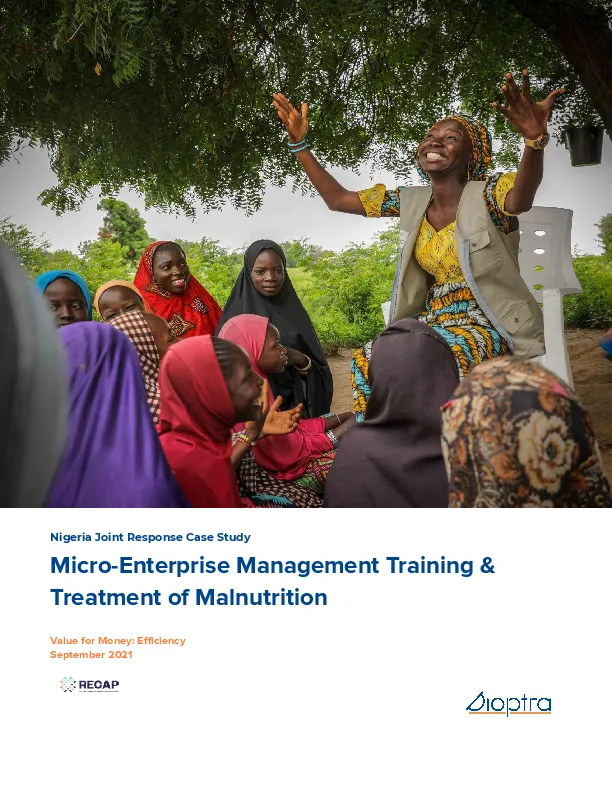
Case Studies and Success Stories, Study: Research
Cost-efficiency of Micro-Enterprise Management Training & Treatment of Malnutrition in the Nigeria Joint Response
Publication year:
2021
English
Format:
PDF (726.5 KiB)
Publisher:
Save the Children UK,Systematic Cost Analysis Consortium
This case study summarizes an analysis conducted by EYN, JDF, JDPH, and SCI using the Dioptra tool to assess the cost-efficiency of micro-enterprise management training and treatment of malnutrition in Nigeria. The analysis revealed that:
- Micro-enterprise management training in Nigeria cost about €114 per client in rural areas and €319 per client in urban areas. The difference in cost was largely due to differences in urban & rural context, type of IGA training, and amount of cash grants given to enterprises that were tailored to local preferences to ensure viability of the micro-enterprises created.
- Where possible, standardising the common components of business skill training so that training materials can be re-used across locations may enhance VfM.
- It cost €149 per child to recover from severe acute malnutrition, and €30 per child to recover from moderate acute malnutrition in Nigeria. If funding had not been constrained, screening and treating more children for moderate acute malnutrition could have increased VfM and prevented more children from deteriorating into severe acute malnutrition.
- Strong community engagement and visible physical impact of Ready-to-Use Supplementary Food (RUSF) on children ensured acceptance and participation by caregivers in MAM screening and treatment.
- Cost-efficiency was not consistently different between international vs. local NGOs. Collaborating between NGOs based on their respective strengths to ensure client reach and technical quality is more important to achieving VfM than focusing resources on one type of agency.
- National NGOs have strong community relationships and can serve the hardest to reach, but must be funded at the same scale as international NGOs in order to spread program benefits to more people in need and leave no one behind.
Read full abstract
Authors
View & Download
Document information
Authors
Format
Content type
Country
Region
Rights
© Author/Publisher
Keywords
Found a mistake? Help us improve!
If you have noticed a document assigned to the wrong author or any other inaccuracies, let us know! Your feedback helps us keep our data accurate and useful for everyone.
Share
Link
